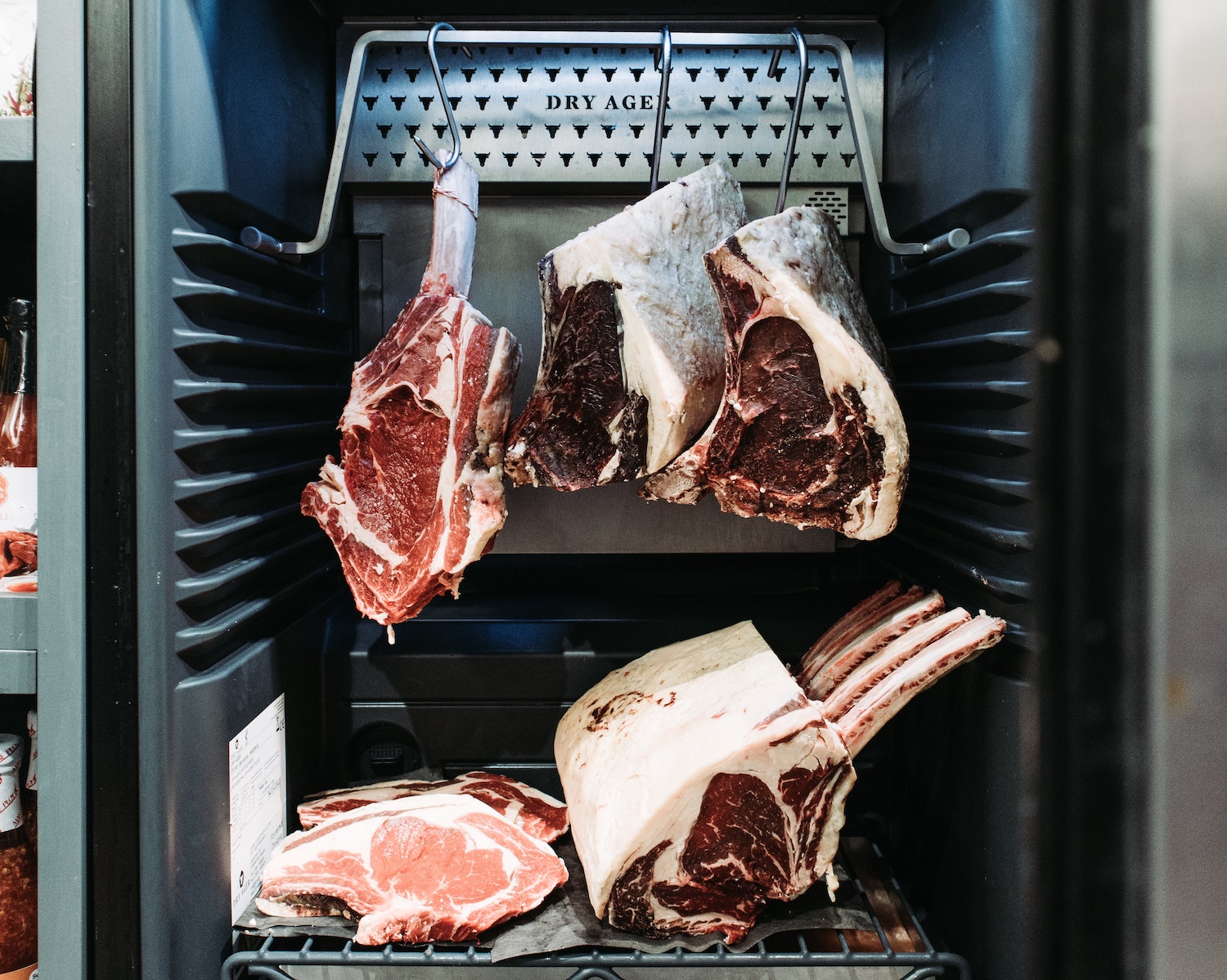
One particular abiding memory of learning to cook professionally involves making supper before evening service for the extremely talented German Executive Head Chef who ruled the kitchen. The first time this privilege was bestowed upon the lowly apprentice, the apprehensive commis looked on as the experienced teacher perused the meat fridge, looking for the darkest coloured piece of striploin steak he could find. The piece an untrained eye may think was ready for the bin.
‘Why do you want that one, Chef?’, was the naive question asked. A raised eyebrow, a cocked head, with wise face and smiling eyes, and a reply which remains embedded in my mind to this day. ‘Because, my dear, this is the piece which will be the most tender. Look at the marbled yellowing fat and deep red-brown colour. This steak will be like butter in the mouth.’ And so it was.
WHY DRY AGE?
‘Wet ageing’ in vacuum packs has become a time and space-saving norm for supermarket ‘in-store butchers and large meat processing houses. Not only does this eradicate proper butchery skills, but it’s also ruining the eating experience. Hanging beef on the bone is a traditional and essential method of ensuring well-developed flavour and tenderness. Beef needs to be aged in order to be palatable. It might look great as a bright red piece of meat or a juicy steak. But it won’t be tender if it’s too fresh.
To dry age, carcasses of beef hang from hooks in a refrigerated environment in their entirety, or insides. This allows the moisture to come out and the enzymes in the meat to break down and tenderize the flesh.
As it ages, the bright red sheen of young meat will be lost in favour of a mature deep red-brown hue. The fat will become a golden creamy yellow. The flesh will give generously when poked with a finger, which is all very good signs. As a general rule, beef needs to be dry-aged on the bone for at least 21 days. Today, however, a new trend is emerging among meat lovers. Extreme ageing is the word on the street.
Dry ageing from 28 days to many weeks is made possible by controlled temperature environments, and even Himalayan salt-lined ageing chambers, which have scientifically finely balanced air, so the beef ages but doesn’t rot.
AGED BEEF AND AGED CATTLE
According to the Foodism, some butchers and restaurants in the UK capital and beyond are now combining extreme ageing techniques with using aged animals. For example, Galician grass-fed dairy cows which have given years of milking service are now being put to good use at the table in one establishment, dry-aged to become meltingly tender, and in demand from those in the know on the London food scene. That has not happened here in Ireland, as far as we know! Maybe we can set the trend now for any willing entrepreneurs.
GOOD FOOD IRELAND BUTCHERS
The specialist beef arena,Irish Piedmontese Beef is an Italian breed reared on Irish soil by one of our producers. Dry-aged and extremely tender, as well as being lower in fat than typical Irish beef breeds. One for those who love their steak but don’t want the calories and cholesterol that goes with it!
Check out our list of butchers who practice the proper craft of butchery, using local meats and dry ageing methods. Here you will find some of the best beef in the land. And you’ll thank us for it.
Murphy’s Craft Butchers – 5 generations of butchers. They rear their own sheep and cattle. This guarantees that they can control the quality of the product from the farm right to your fork.
Higgins Family Butchers – 4 generation of butchers. They have established a reputation for dry aging the meat on the bone.
Michael McGrath – Own beef and own abattoir in Lismore.
Sean Kelly of Kelly’s of Newport – Own prime beef and abattoir.
Butchers Best – Has a standard of ageing the beef for a minimum of 28 days.
The Village Butcher – They specialise in featuring rare cuts of meat.
Tom Durcan Meats – Meats have come from Irish cattle that are less than two years old and maize fed for at least three months.
Buy Gift Voucher
